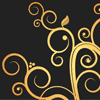Jared Spool on “The Dawning of the Age of Experience”
Experience design is no longer a nice-to-have luxury of a few organizations with tons of money and exceptional visionary management. It’s become commonplace for organizations that build products and Web sites. Experience Design is a centerpiece of boardroom discussions and quickly becoming a key performance indicator for many businesses.
However, you can’t just hire a couple of “experience designers” and tell them, “Go do that voodoo that you do so well.” Today’s business environment forces us to build multi-disciplinary teams, compiling a diverse group of skills and experiences to handle the many facets of the technical, business, and user requirements.
In his usual entertaining and insightful manner, Jared talked about what it takes to build a design team that meets today’s needs. See how successful experience design integrates the needs of the users with the requirements of the business; is learned, but not available through introspection; must be invisible to succeed; is cultural; is multi-disciplinary; and thrives best in an “educate and administrate” environment.
You see examples of designs from Apple’s iPod, Netflix, the Mayo Clinic, and Southwest Airlines, to name a few.
“The Brave New World: Usability Challenges of Web 2.0” is the title of another recent talk (July 2007 – 1:36:59) by Jared Spool at the Delaware Valley Chapter of the Usability Professionals’ Association (UPA).
Once again, everything is exciting. The advent of social networks, APIs, mashups, RSS, aggregators, and folksonomies promise a world where the information and services we’ve always wanted are delivered right to our browser.
However, delivering on the promise is easier said than done. Moving from a great concept to an exceptional user experience proves to be more of a challenge than many people thought. What works on a small scale is a very different story, when put into production.
As Spiderman’s Uncle Ben pointed out, “With great power comes great responsibility.” Just because we can do all these things doesn’t mean we should do them. In the early 1980’s, the cheap availability of laser printers and digital fonts produced a plethora of documents that more resembled ransom notes than professional publications. We could easily imagine designers going wild with the capabilities of this new technology and not using the restraint necessary to ensure they produce an optimal experience.
In this entertaining and informative presentation, Jared shows examples of the usability challenges we face as the web continues to change and evolve. He discusses the implications of “The Long Tail”, the introduction of a mashup mentality in business environments, and how basic techniques, such as usability testing and field studies, change when social network is at the center of the design.




